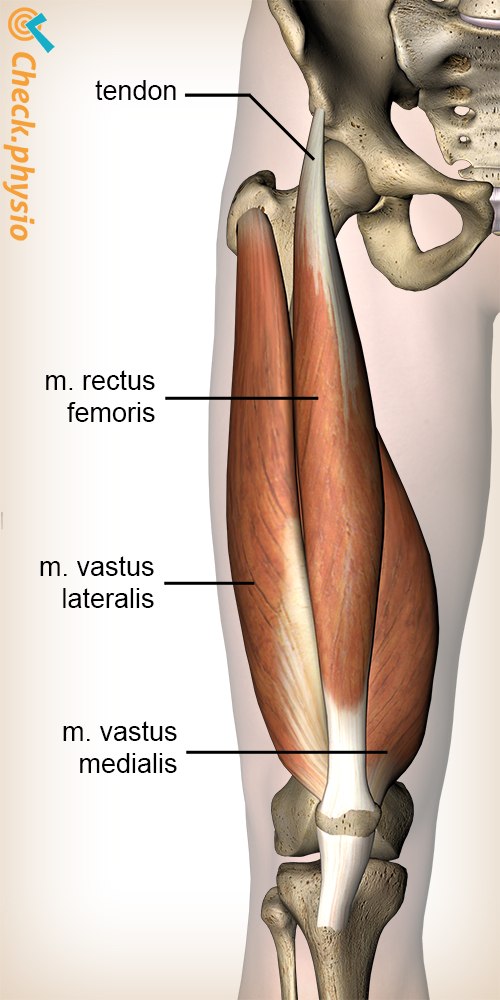- Conditions
- Rectus femoris tendinopathy
Rectus femoris tendinopathy Rectus femoris tendinitis / inflammation of the tendon of the rectus femoris (hip flexor) muscle
Introduction
Rectus femoris tendinopathy affects the tendon of an important thigh muscle. This causes pain along the front of the hip and thigh.
The rectus femoris is one of the four muscles that form the quadriceps muscle group. The rectus femoris runs from the hip to the knee. Its functions are to extend the knee and flex the hip.

Description of condition
The tendon along the upper part of the rectus femoris is inflamed. This produces pain along the front of the hip. In more severe cases the tendon can tear partially or completely. An affected tendon causes pain whenever the muscle is contracted or stretched.
Cause and history
The most common cause is overloading. This can develop gradually or acutely as a result of a rapid, brief physical effort.
Signs & symptoms
- Pain along the front of the hip and/or thigh.
- Pressing on the painful area makes the symptoms worse.
- Pain when elevating and/or extending the knee against resistance.
- Pain when stretching the quadriceps muscle.
- The front of the hip may feel stiff.
- The symptoms can occur during various activities that involve this muscle. Examples include running or playing football.
Diagnosis
The diagnosis of rectus femoris tendinopathy is a clinical diagnosis. This means that the diagnosis can be made based on an interview and physical exam, without the need for further additional investigation.
Especially tests where force is applied to the tendon cause pain.
Ultrasound can be used to show any calcification and to assess the quality of the tendon tissue.
Treatment and recovery
The treatment consists of training the muscle and tendon, as well as the surrounding muscles. Underloading of a body part often precedes overloading. The muscle may not be strong enough to handle the stress. To prevent this, it is essential to train the muscle properly.
Training can include both strength and stretching exercises. A well-structured training regimen strengthens the muscle tissue, significantly reducing the risk of overloading. If calcium deposits are present, shockwave therapy may be used.
Exercises
Follow the online exercise program with exercises for rectus femoris tendinopathy.
More info
You can check your symptoms using the online physiotherapy check or make an appointment with a physiotherapy practice in your locality.
